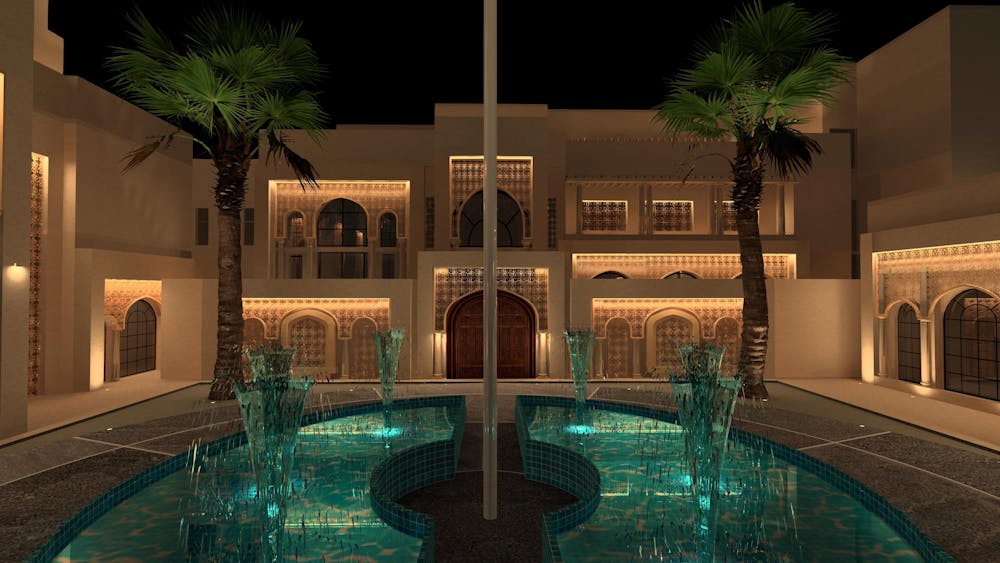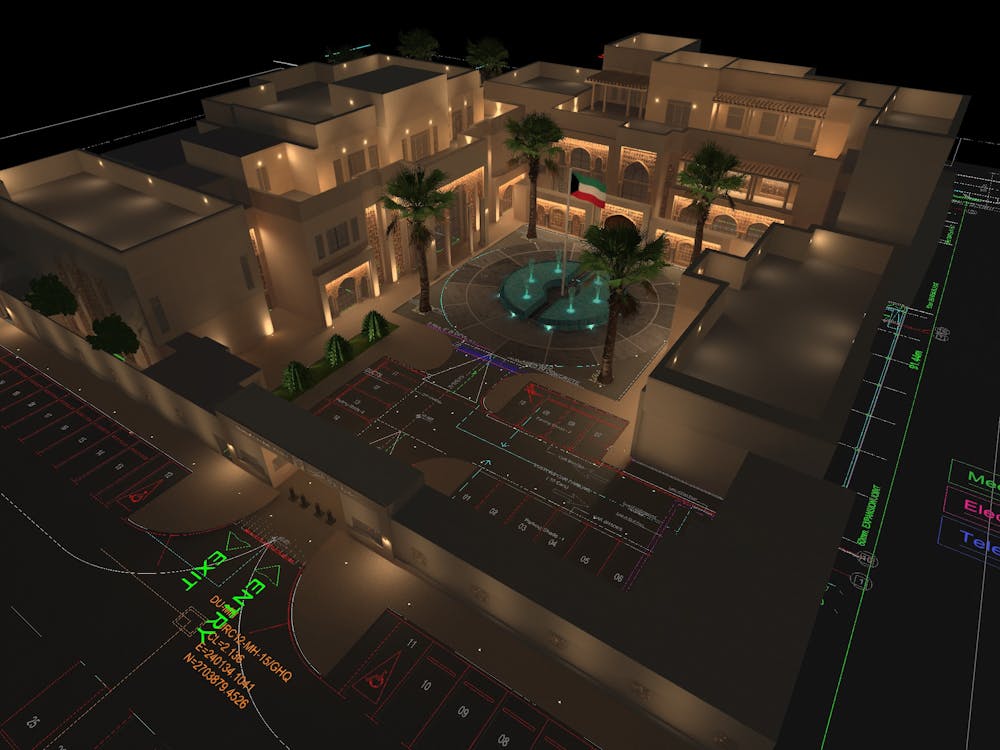Sumaiya Eliyaz is a Senior Lighting Designer, based in the South of India (Karnataka) and working for a company in the UAE. She is also hosting her own YouTube channel with many useful tutorials about DIALux evo. We are happy to have the opportunity to interview her and get some insights about her daily work.
How long have you been working with DIALux evo?
I have been working with DIALux evo for the past five years. However, as a student, I started exploring the lighting design field ten years ago with DIALux Mobile and DIALux 4.
What trends or challenges do you observe in lighting design, especially in your region?
There are plenty of different new technology trends in the lighting industry that has been emerged. One of them is a Green light for sustainability. UAE is firmly committed to becoming greener and more sustainable. Hence there is a surge in demand for Energy-efficient lighting solutions and systems.
Video mapping, media facades, immersive building lighting, and dynamic façade lighting concepts are very widely planned to create a “wow factor” in façade lighting designs. Modern open space offices are adopting acoustic lighting solutions. Coming to lighting design trends for interior space, bespoke lighting is much loved. Luminaires that serve both interactions of aesthetics and function are highly preferred in upscale residential projects.
India has similar lighting design trends, and the LED industry got a boost under the Make in India Initiative. “Human Centric lighting” is a futuristic trend in the lighting industry. There is the rapid adoption of energy–efficient street lighting systems. The market is fast evolving, and the acceptance of new concepts and products are getting better.
How important is energy saving and daylight-dependent controlling for you?
Energy is something that we have taken for granted for centuries. We burn fossil fuels for a lot of our energy needs which is contributing to global warming through the emission of GHG. This method of Energy production also releases harmful carbon dioxide into the atmosphere and has resulted in numerous problems that put ecosystems and wildlife at risk. More than ever, this highlights the importance of saving energy.
Electricity for lighting accounts for almost 20 % of electricity consumption worldwide. If not addressed immediately, global energy consumption for lighting will grow drastically.
Therefore, adopting daylight – dependent controlling system is important to reduce electricity consumption and carbon footprint. It has psychological and aesthetic benefits as well. Reducing overall energy demand can reduce the country’s reliance on oil, gas, and coal imports for energy production.
I believe this new addition of energy saving feature in DIALux evo 11, will help bring revolution. We can base our decisions for energy efficient lighting control systems on accurate and reliable data derived from DIALux evo. Mapping energy consumption from different lighting plans and strategies, making an informed cost-benefit decision, and helping contribute to sustainability.
Which project was the most exciting for you?
In India and UAE, I have worked on versatile projects - residential, commercial, retail, hospitals, universities, Government Buildings, Facades, Street lighting, Tunnel lighting, etc. But there are two most exciting projects I would love to talk about. One is the Embassy. At ALS Lighting, we worked on the façade lighting packed with details for this project. I made a complete 3D model in DIALux Evo with detailed lighting to produce photo-realistic renders for high-level presentation. The project’s large footprint includes five buildings. The Islamic mashrabiya architectural element added to the complexity of 3D modeling. But I am happy with the results. The images are 4K UHD renders from DIALux evo.
The other one is Medical University Project. We designed a complete lighting scheme by strictly following CIBSE lighting standards. The project had demanding environments in terms of lighting because of the different lighting needs of patients, hospital staff, students, teachers, and visitors. We used some special lighting fixtures like clean room fittings and explosion-proof fixtures too in this project.


What do you particularly like about DIALux evo?
DIALux evo helps me visualize my design ideas.
As lighting designers, we must communicate with electrical Consultants, MEP Consultants, Architects, Interior designers, and even non-technical people. Each one have its design approach and concerns for lighting. And DIALux evo helps me speak my design language to them, whether it’s detailed technical design or conceptual lighting design. It’s easy to convince clients with DIALux evo-produced presentations and reports.
What I particularly like about DIALux evo is that with every version, many useful features are added, considering the viewpoints of designers/trends and technologies. The new energy saving feature of DIALux evo is going to create awareness and help produce sustainable energy lighting designs worldwide.
DIALux evo doesn’t ignore the addition of even a simple feature that will help its user. For example, DIALux evo 11 has this update now; in which even if lux levels are achieved but uniformity is not achieved it’s going to show a red mark in the results overview. This may seem simple addition but it’s very important. The other best thing about DIALux evo is its pro feature. While working on big and special projects the Pro Feature has helped me to speed up my work, I can easily access the data in MS and generate reports in required formats for technical submissions. I majorly use the Pro Feature to get LPD reports.

